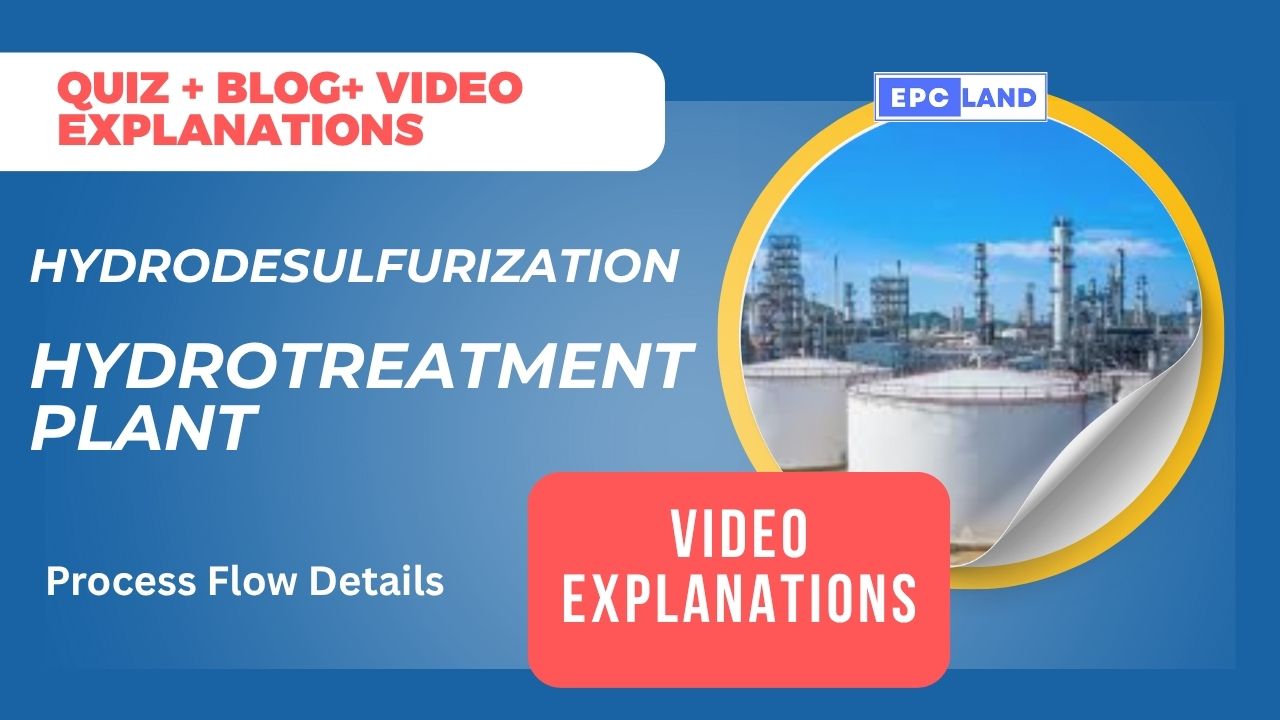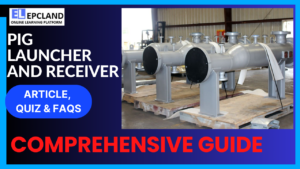Hydrodesulfurization: Conquer 10 Vital Questions
Understanding the core processes in the oil and gas industry is crucial for anyone involved in engineering or operations. One fundamental process is Hydrodesulfurization, often abbreviated as HDS. This vital unit is responsible for removing sulfur compounds from fuels, tackling problems like pollution and catalyst poisoning. Mastering the complexities of a Hydrodesulfurization plant is essential for optimizing efficiency and ensuring cleaner energy products. This deep dive explores the key stages and components involved in this transformative chemical engineering process, providing insights into its critical role in modern refining.
Table of Contents
- Introduction
- The Quiz Section: Test Your Knowledge on Hydrodesulfurization
- Major Takeaways
- Conclusion
- Check all Quiz Blogs with Video Explanations
🔷 Check the complete course on Piping Engineering
The Quiz Section: Test Your Knowledge on Hydrodesulfurization
Question 1: What is the primary objective of a Hydrodesulfurization (HDS) unit in the oil and gas industry?
Question 2: Why is hydrogen used as a key reactant in the Hydrodesulfurization process?
Question 3: What are typical operating conditions within the fixed bed reactor in a Hydrodesulfurization unit?
Question 4: What is the function of the catalyst in the Hydrodesulfurization reactor?
Question 5: The heat exchanger placed after the reactor serves what primary purpose in the HDS process?
Question 6: What happens to the product stream after it passes through the heat exchanger and cools down before entering the gas separator?
Question 7: In the HDS process, which unit specifically uses a lean amine solution to remove hydrogen sulfide (H2S) from the gas stream?
Question 8: What is the function of the stripper unit in conjunction with the amine contactor?
Question 9: What typically happens to the concentrated hydrogen sulfide gas released from the stripper unit?
Question 10: What happens to the hydrogen-rich recycle gas stream in the HDS process?
📘 Explore all available courses on EPCLAND
Major Takeaways
- Hydrodesulfurization is a critical refinery process aimed at removing sulfur compounds from fuels to prevent pollution and catalyst deactivation.
- Hydrogen is the key reactive component in Hydrodesulfurization, combining with sulfur to form hydrogen sulfide.
- The core reaction in Hydrodesulfurization occurs in a fixed-bed reactor under severe conditions of high temperature and pressure, using a catalyst.
- Energy efficiency in Hydrodesulfurization is enhanced through heat exchangers preheating the feed using hot reactor effluent and recycling unreacted hydrogen.
- Separation of the liquid product from gases like H2S and unreacted hydrogen occurs after cooling in a gas separator.
- Hydrogen sulfide is effectively removed from the gas stream using amine scrubbing and then recovered from the amine in a stripper for further treatment, showcasing the integrated nature of the Hydrodesulfurization plant.
Conclusion
In conclusion, Hydrodesulfurization is a complex yet elegantly engineered process fundamental to producing cleaner fuels. From the initial reaction of sulfur compounds with hydrogen over a catalyst under harsh conditions to the sophisticated separation, amine scrubbing, and regeneration steps, every part of the Hydrodesulfurization unit is designed for efficiency and environmental responsibility. Understanding the flow and function of each component provides valuable insight into the layers of chemical engineering required to refine petroleum products. Hydrodesulfurization is not just sulfur removal; it’s a cornerstone of modern clean fuel production.
📚 Check all Quiz Blogs with Video Explanations



